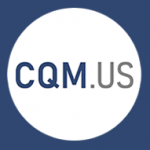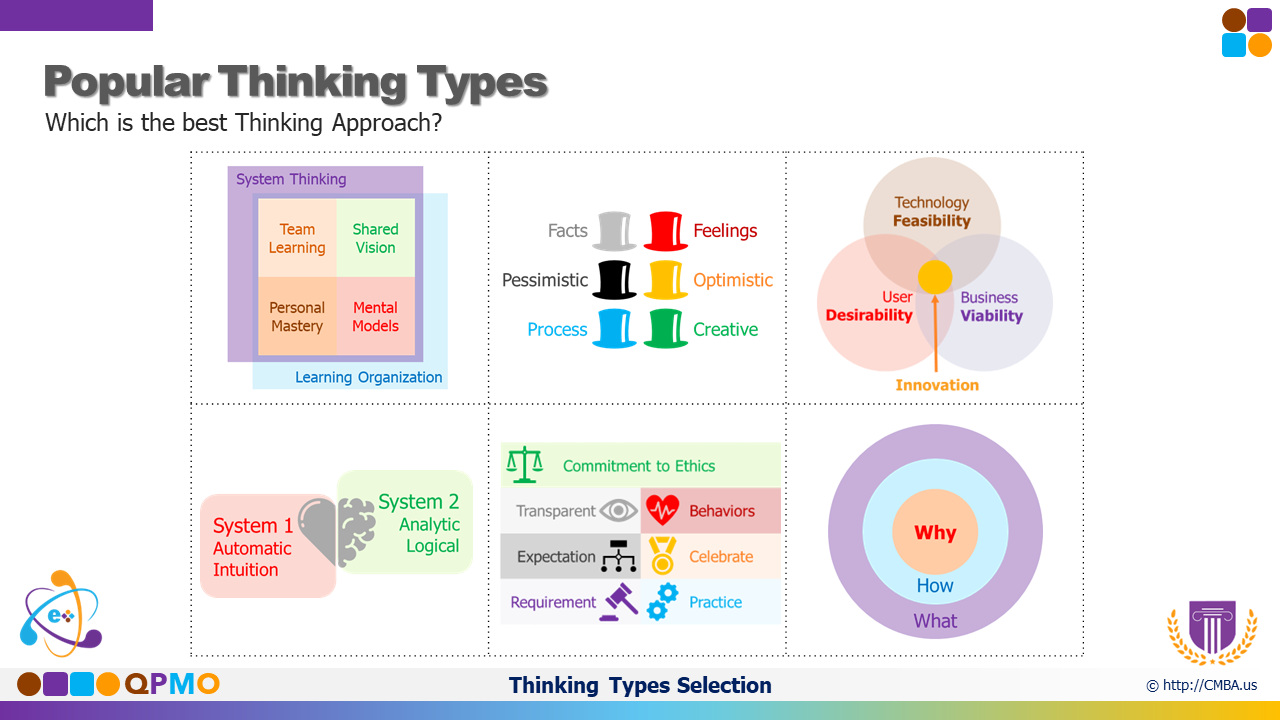System Thinking for Human & Organizational Performance
The Sixth Sense: Forecasting & Thinking in the Crystal Sphere of Excellence
In the intricate dance of human and organizational performance, there exists a realm beyond the ordinary five senses—a realm where empathetic leadership, strategic thinking, and holistic forecasting converge. Welcome to the world of "The Sixth Sense: Forecasting & Thinking," where we embark on a journey through the crystal sphere of excellence, exploring the dimensions that shape our ability to anticipate, plan, and build a future aligned with our deepest aspirations.
"Within the whispers of intuition and the echoes of experience, the Sixth Sense unveils the unseen, allowing us to forecast the future with wisdom."
CMBA Thinking: Forecasting for Human & Organizational Performance
In the vast landscape of information inundating us through social media, the multitude of mindsets, methodologies, frameworks, and teachings can be overwhelming. Consultants and thought leaders offer a plethora of recommendations, each vying for attention and adoption. Amidst this abundance, the true art lies not only in discerning the valuable insights but also in understanding the nuances of when and where to apply them. It's a journey of wisdom, a quest for a sixth sense that enables us to navigate the sea of information and make "smart decisions faster." In this realm, the ability to grasp the trade-offs and select the most fitting method for a given situation becomes the cornerstone of strategic decision-making. Join me in exploring the path to cultivating this sixth sense, unraveling the secrets to discernment in the ever-evolving landscape of professional wisdom.
- Holding (Know-how): Picture a world where knowledge is not just power but the key to unlocking the mysteries of tomorrow. The sixth sense, fortified by a profound holding of know-how, empowers individuals and organizations to navigate the unknown with confidence.
- Health (Safety): Safety isn't just a checklist; it's a fundamental aspect of the sixth sense. A focus on physical and psychological well-being ensures that our forecasting endeavors are grounded in a resilient and secure foundation.
- Happiness (Quality): Pursuing excellence is a compass guiding the sixth sense towards quality outcomes. By infusing happiness into our processes, we cultivate a mindset that sees challenges as opportunities for improvement.
- Harmony (Sustainability): The sixth sense envisions a future where harmony with the environment and organizational well-being is not just a goal but a way of life. Sustainability becomes the compass guiding our decisions for the long-term benefit of all.
Excellence, exuberance, empowerment, equity, and empathy—the 5e Values of EMARI System Thinking form the quintessence of the sixth sense. They intertwine seamlessly, amplifying the clarity of our vision and the precision of our forecasting, guiding us towards a future where success is measured not just by achievements but by the positive impact on individuals and the world as we apply the QPMO Methodology.
The integration of different types of thinking (Strategic, Design, Lateral, Ethical, Critical, Creative) with the various levels of delegation (Tell, Sell, Consult, Agree, Advise, Inquire) plays a pivotal role in enhancing both human and organizational performance. In this context, Strategic Thinking is crucial at the 'Tell' and 'Sell' levels of delegation, where setting clear goals and explaining the rationale behind decisions are essential. Similarly, Design Thinking becomes significant at the 'Advise' and 'Inquire' stages, promoting empathy and collaboration for innovative solutions. Lateral Thinking is particularly relevant at the 'Inquire' stage, encouraging unconventional solutions and breakthrough ideas. In all stages of delegation, Ethical Thinking ensures alignment with moral values and emphasizes 'Safety' as part of Health in the 4Hs framework.
Critical Thinking is vital at the 'Consult' and 'Agree' stages, where informed decision-making is key, while Creative Thinking encourages innovative approaches at the 'Advise' and 'Inquire' levels, contributing to 'Quality' (Happiness) and 'Sustainability' (Harmony) in the 4Hs of Holding (Know-how), Health (Safety), Happiness (Quality), and Harmony (Sustainability). This approach to delegation not only enhances the skills and understanding of team members (Holding) but also prioritizes their safety and psychological well-being (Health), fosters job satisfaction and high-quality work (Happiness), and promotes sustainable practices for long-term success (Harmony). By aligning these thinking styles with appropriate levels of delegation, leaders can create an effective, ethical, and dynamic work environment that supports both individual growth and organizational success.
QualityPMO applied to CMBA Thinking
In the complex world of leadership styles and the intricate dimensions of the Quality Project Management Office (QPMO), the sixth sense emerges as the guiding force that intertwines through each distinct dimension. As we navigate through the various areas of strategic, change, empathetic, integrated, situational, and servant leadership, along with the multifaceted aspects of the QPMO, the sixth sense serves as a compass, illuminating the path towards a future shaped by foresight, wisdom, and effective decision-making.
1. Empathetic Leadership (Foundation): This foundational element sets the stage for understanding and connecting with others, providing the bedrock for effective forecasting and decision-making. It's the guiding force that unites diverse perspectives, fostering an environment where the collective intelligence of the team becomes greater than the sum of its parts.
2. Technical Know-how: The sixth sense demands a mastery of technical intricacies, a deep understanding that sharpens our foresight and equips us to navigate the complexities of an ever-evolving landscape.
3. Business Operations: As we peer into the crystal sphere, effective business operations emerge as the beacon lighting the path forward. A strategic blend of efficiency and adaptability becomes the key to unlocking our sixth sense potential.
4. Project Management: In the symphony of forecasting, project management orchestrates the harmonious execution of plans. It transforms ideas into reality, ensuring that our sixth sense isn't just a vision but a tangible force shaping the world.
5. Quality & Innovation: The pursuit of quality and innovation fuels the sixth sense, propelling us beyond the boundaries of the known. It challenges us to explore uncharted territories and redefine what's possible.
6. Sustainable Agility (Top Goal): At the pinnacle of the QPMO dimensions, sustainable agility stands as the top goal. It encapsulates the essence of the sixth sense—a dynamic, adaptive, and resilient approach to forecasting that ensures continued success in the face of uncertainty.
- Strategic Thinking:
- Thought Leader: Peter Senge
- Book to Read: "The Fifth Discipline"
- Why: Applies holistic systems thinking, guiding holistic strategic decisions for the business mission.
- System thinking for Team Learning,
- Shared Vision
- Personal Mastery
- Mental Models
- would lead to a Learning Organization
- Design Thinking:
- Thought Leader: Tim Brown
- Book to Read: "Change by Design"
- Why: Tim Brown's expertise in design thinking aligns with conceptual thinking and requirement management in change management.
- Innovation is derived from the intersection of:
- Technology FEASIBILITY
- User DESIRABILITY and,
- Business VIABILITY
- Lateral Thinking:
- Thought Leader: Edward De Bono
- Book to Read: "Lateral Thinking: Creativity Step by Step"
- Why: De Bono's lateral thinking approach is instrumental in fact-finding and fostering social awareness, crucial in empathetic leadership.
- Put on Six different hats when making decisions:
- White Hat: Data, facts information known or needed
- Black Hat: Difficulties, potential problems, why something may not work
- Blue Hat: Manage process, next steps, action plans
- Red Hat: Feelings, hunches, instinct and intuition
- Yellow Hat: Values and benefits, why something may work
- Green Hat: Creativity, solutions, alternatives, new ideas
- Put on Six different hats when making decisions:
- Ethical Thinking:
- Thought Leader: Linda Fisher Thornton
- Book to Read: "7 Lenses: Learning the Principles and Practices of Ethical Leadership"
- Why: Linda Fisher Thornton is known for her work in ethical leadership
- Keep the decision-making process open and transparent.
- Prevent interpersonal behaviors from eroding trust.
- Expect subordinates to behave ethically.
- Make ethics a part of all business practices.
- See ethics as more than laws and regulations.
- Celebrate ethical victories.
- Commit to ethics in the long and short term.
- Critical Thinking:
- Thought Leader: Daniel Kahneman
- Book to Read: "Thinking, Fast and Slow"
- Why: Kahneman's exploration of decision-making biases aligns with critical thinking, promoting mindfulness and know-how in situational leadership.
- System 1: Fast Thinking
- Continuously scan surrounding
- Fast action but error-prone
- Impulses and intuition to work automatically
- System 2: Slow Thinking
- For specific problems
- Self-control for analyzing the problem
- Slow but reliable problem-solving
- System 1: Fast Thinking
- Creative Thinking:
- Thought Leader: Simon Sinek
- Book to Read: "Start with Why"
- Why: Sinek's perspective on servant leadership fosters a culture of quality and innovation, making creative thinking integral to leadership.
- Ask Questions in order: What, How, and Why
- What: Every organization on the planet knows WHAT they do. These are products they sell or the services
- How: Some organizations know HOW they do it. These are the things that make them special or set them apart from their competition.
- Why: Very few organizations know WHY they do what they do. WHY is not about making money. That's a result. WHY is a purpose, cause or belief. It's the very reason your organization exists
- Ask Questions in order: What, How, and Why
The CMBA Collaborative Thinking is based on a philosophy of continuous learning. It involves mastering all types of thinking and using them effectively when needed. This approach focuses on strategic, change, empathetic, integrated, situational, and servant leadership styles, which are aligned with the dynamic dimensions of the Quality Project Management Office. CMBA Thinking emphasizes the importance of understanding diverse thinking modalities and applying them appropriately in our leadership journey. It helps us develop resilience, adaptability, and strategic foresight, which are essential for achieving long-term success.
Committed to helping our professional community
Navigating the Future of Work
Joining our Community of Practice dedicated to Collaborative Management for Business Activities (CMBA) is your gateway to unlocking a treasure trove of insights. Engage in meaningful discussions with professionals like yourself, contributing your wealth of experience while gaining valuable perspectives from diverse voices. This collaborative exchange fosters a rich tapestry of ideas essential for navigating the ever-evolving landscape of the Future of Work.
Intellectual Exchange & Continuous Improvement:
Intellectual Exchange: Actively participate in discussions to contribute and gain insights, fostering a dynamic environment for intellectual exchange.
Continuous Improvement: Harness the collective knowledge within the community to refine strategies, adopt best practices, and stay ahead of the curve for personal and organizational growth.
Collaborative Learning & Inclusive Network:
Collaborative Learning: Engage in open dialogue and constructive debates within the community, promoting a collaborative learning environment that mirrors CMBA principles.
Inclusive Network: Foster collaborative relationships, supporting and learning from diverse perspectives, ensuring a network that embraces inclusion and trust.
Proactive Engagement & Empowering Predictions
Enroll Today: Join our CMBA Community of Practice to actively contribute and engage in discussions.
Shape the Future: Share your insights, learn from diverse perspectives, and be a part of shaping the future of work through collaborative leadership.











